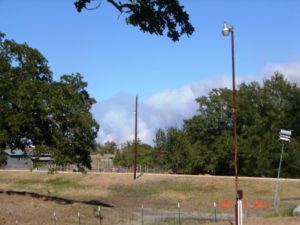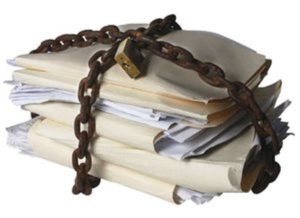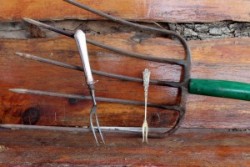Ever play that game “if you only had 5 minutes, what would you grab before you had to leave your home to total destruction” or some variant?
We lived it.
A few years ago, thousands of acres of loblolly pines, homes and business burned in Bastrop County, Texas. Along with the main fire, there were a few significant “satellite” fires that started because of the prime burning conditions (drought, wind) and people being stupid (need to burn your trash during a burn ban with a major wild fire nearby? Really?) While we watch the billowing clouds of the main fire from our front porch, ever diligent to changing winds and warnings, one of these satellite fires caused by the stupid person burning her trash sprung up a scant 8 miles from us.

The view from the front porch. Not fun. We took turns sleeping, one of always watching and/or listening.
Know that the Bastrop fires were moving at an incredible pace because of the prime conditions. Check out this
I don’t want to make this blog about the fires though. Suffice it to say we escaped unharmed, unlike so many. And now with recent flooding, it brings to mind the things we did then and the stopgaps we have put in place “just in case” that might be helpful to you, dear reader, in the fond hopes that you don’t have to go through a disaster to learn the lessons. Since this would be a very long blog should I detail the many things we considered staring out at the nearing smoke wall for days off our front porch, I’ll start with what I consider step one: a safe deposit box.
We didn’t have one at the time, but do now, and at a fee of $40/year a safe deposit box is a great deal at our bank. We try to add things to it as they come up (buying a car, new insurance policy, etc.), and also try to take empty the box and update its contents annually.
A dozen things to keep in your safe deposit box:
1. Legal documents – Including wills, powers of attorney, medical directives, marriage license, divorce decrees, property deeds, etc. Some legal documents I have called out separately.
2. Vehicle titles or bills of sale
3. Banking and investment account numbers – This can be as simple as tossing in a bank statement and an investment account statement for each account that you have. The balances won’t be right but you are just trying to capture the account numbers and the contact information. You could also make a quick list.
4. Insurance policies – We make copies of these and put the originals in the box, and have the copies at home in case we need to reference them. This includes home, vehicle, liability, umbrella, life, medical, and any other insurances you might have. IMPORTANT – Leave a note listing any job-related benefits that an heir might not be aware of as you likely won’t have paperwork indicating life insurance, accidental death coverage or similar through your employer.

Don’t get overwhelmed. One thing at a time and you’ll get there.
Image Credit – Tulsa World
5. Copies of credit cards – I lay out all the credit cards face down on the copier and make one copy, then turn them over and copy the backs and staple the two together (or you can do it double-sided if you are more copier-gifted than me). This also comes in handy if you ever have your purse/wallet stolen.
6. Copies of drivers licenses.
7. Birth certificates
8. Social Security cards – carry copies, store the originals
9. Computer system backup – I use a portable hard drive and back up at least annually and backup a full system image, not just the files. This also takes care of keeping things like previous year’s tax returns, etc. in the safe deposit box as they are all on the computer/backup.
10. Photo “tour” on SSID – This is a fairly new addition (and you could also have this on your computer/backup) but with SSIDs so inexpensive we just plug one into our camera and take a tour of our house, barns, etc., then toss it in the safe deposit box. I’m sure in times of loss it’s easy to forget you have certain things. This also provides proof to your insurance company that you actually owned these items. Take specific photos of items of unique or high value (collectibles, antiques, guns, jewelry, etc.)
11. Things of high value. Personally, I’m a fan of displaying things that are of value and enjoying them, but you might prefer to store old coins, jewelry and other valuables to protect them from theft, loss, etc. Up to you.
12. Things of unique value. Photos and papers where the original is important. I’ve been on a seemingly Sisyphus-like quest to scan hard copy photos onto the computer, but there are some documents, books, and photos that you just want to have the original of.
You might also consider storing diplomas, although these are easily replaced by contacting your academic institution, but you may have sentimental value attached to the originals.
It may seem intimidating at first to gather all these documents, take all these photos, make all these copies. Do what you can when you can. Each thing you pop into the box is adding to a safety net that can help make recovering from a disaster much less painful and difficult.
Coming up, a blog about bugging out.
